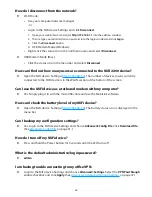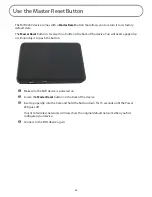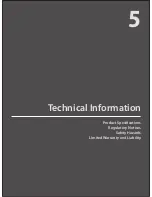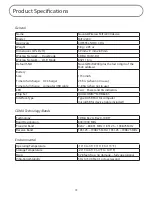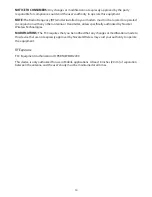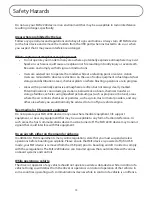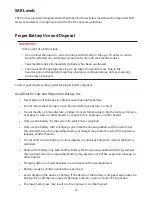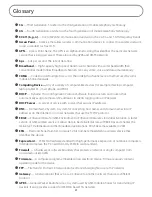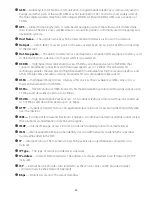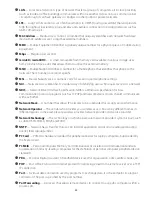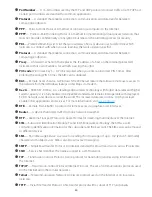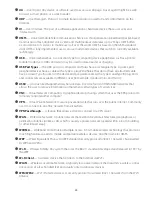
84
●
Port Number
— A 16-bit number used by the TCP and UDP protocols to direct traffic on a TCP/IP host.
Certain port numbers are standard for common applications.
●
Protocol
— A standard that enables connection, communication, and data transfer between
computing endpoints.
●
PPP
— Point-to-Point Protocol. A method of connecting a computer to the Internet.
●
PPTP
— Point-to-Point Tunneling Protocol. A method for implementing virtual private networks that
does not provide confidentiality or encryption but relies on the tunneling process for security.
●
PRL
— Preferred Roaming List. A list that your wireless phone or device uses to determine which
networks to connect with when you are roaming. (Network operator specific)
●
Protocol
— A standard that enables connection, communication, and data transfer between
computing endpoints.
●
Proxy
— A firewall mechanism that replaces the IP address of a host on the internal (protected)
network with its own IP address for all traffic passing through it.
●
PUK code
(Pin Unlock Key) — A PUK is required when you enter an incorrect PIN 3 times. After
entering the wrong PIN 3 times, the SIM card is disabled.
●
RAS
— Remote Access Service. A Windows NT/2000 Server feature that allows remote users access to
the network from their Windows laptops or desktops via modem.
●
Rev A
— CDMA EV-DO Rev. A is a leading-edge wireless technology with higher data rates and higher
system capacity. It is a fully backward compatible standard and remains interoperable with deployed
EV-DO networks and devices around the world. The increased data rates on Rev. A’s physical layer
enable richer applications and services. For more information, visit
www.cdg.org
.
●
RFB
— Remote Frame Buffer. A protocol for remote access to graphical user interfaces.
●
Router
— A device that directs traffic from one network to another.
●
RTP
— Real-time Transport Protocol. A packet format for streaming multimedia over the Internet.
●
SIM
— Subscriber Identification Module. Found in GSM network technology, the SIM is a card
containing identification information for the subscriber and their account. The SIM card can be moved
to different devices.
●
SMS
— Short Message Service. A service for sending short messages of up to 160 (224 in 5-bit mode)
characters to mobile devices. SMS is also known as text messaging.
●
SMTP
— Simple Mail Transfer Protocol. An Internet standard for email transmission across IP networks.
●
SSID
— Service Set IDentifier. The name assigned to a Wi-Fi network.
●
TCP
— Transmission Control Protocol. A core protocol for transmitting and receiving information over
the Internet.
●
TCP/IP
— Transmission Control Protocol/Internet Protocol. The set of communications protocols used
for the Internet and other similar networks.
●
Telnet
— Telecommunication Network. A network protocol used on the Internet or on local area
networks.
●
TFTP
— Trivial File Transfer Protocol. A file transfer protocol with a subset of FTP functionality.
Summary of Contents for MiFi2200
Page 1: ...2200 Intelligent Mobile Hotspot user product guide ...
Page 13: ...2 Using Your MiFi 2200 Using the MiFi 2200 for the First Time Connecting in Wi Fi Mode ...
Page 37: ...36 Wi Fi Log Click the Wi Fi Log button to view a listing of Wi Fi events most recent first ...
Page 79: ...6 Glossary Glossary ...

